

1. Thread
Thread is a vital sewing material used to stitch together fabrics. It comes in various thicknesses and materials, including cotton, polyester, silk, and nylon. Choosing the right thread depends on the fabric and the purpose of your sewing project. For heavy fabrics, go for thicker threads, while lighter fabrics require finer threads. Ensure the color of the thread complements or matches the fabric for a neat and seamless look.
2. Fabric
Fabric is the base material used for sewing projects. Different types of fabrics include cotton, linen, silk, wool, polyester, and many more. Each type has its unique characteristics, such as texture, drape, and durability. When selecting fabric, consider factors like the project, desired outcome, and care instructions. Understanding the properties of different fabrics will help you choose the right material for your sewing needs.
3. Needles
Needles are essential tools for hand sewing or machine stitching. They come in various sizes and styles, and each is designed for different purposes. For instance, ballpoint needles are suitable for knit fabrics, while sharps are ideal for woven fabrics. Thicker needles are used for heavier fabrics, while finer needles are for delicate fabrics. Always ensure your needle is sharp to prevent damaging the fabric during the sewing process.
4. Pins
Pins are used to hold fabric pieces together before sewing. They come in handy when working with patterns or aligning edges. There are various types of sewing pins, including straight pins, glass head pins, and quilting pins. Choose pins that suit your specific project and be careful not to prick yourself while sewing. Pins should be inserted perpendicular to the fabric to ensure they are easily removed.
5. Scissors
Scissors are necessary for cutting fabric and trimming. Different types of scissors are designed for specific purposes. Fabric scissors typically have long blades and serrated edges to prevent fraying. It’s essential to keep your scissors sharp and designate them for fabric use only. Using dull scissors can result in uneven cuts, damaging both the fabric and your sewing project.
6. Buttons, Zippers, and Fasteners
Buttons, zippers, and other fasteners add functionality and aesthetic value to garments. Buttons come in various sizes, shapes, and materials, while zippers allow for quick opening and closing. Choose the right type of fastener based on your sewing project and the look you want to achieve.
7. Interfacing
Interfacing is a thin layer of fabric used to provide structure and stability to areas like collars, cuffs, and waistbands. It can be fusible (adheres when heated) or sew-in (requires stitching to attach). Interfacing helps maintain the shape of these areas and gives a polished finish to garments.
8. Elastic
Elastic is a stretchable material commonly used in waistbands, cuffs, and other areas requiring flexibility. Choose the appropriate width and type of elastic for your project. It’s important to ensure the elastic is neither too loose nor too tight.
9. Seam ripper
A seam ripper is a tiny tool used to remove stitches when mistakes occur. It helps undo seams and stitch lines without damaging the fabric. Seam rippers are indispensable for correcting errors and achieving professional results.
10. Thimble
A thimble is a protective tool worn on the finger to prevent needle pricks while hand sewing. It provides a barrier between the needle and your finger, ensuring comfort and safety. Thimbles come in various materials, including metal, rubber, and leather. Choose one that fits well and allows for easy manipulation of the needle.
Conclusion
Sewing materials play a crucial role in the success of any sewing project. By understanding the different types of sewing materials available, you can make informed decisions when choosing the right materials for your specific needs. Whether it’s threads, fabrics, needles, or other sewing tools, each element contributes to the overall quality and aesthetic appeal of your creations.
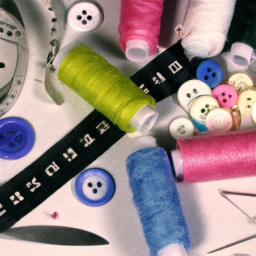
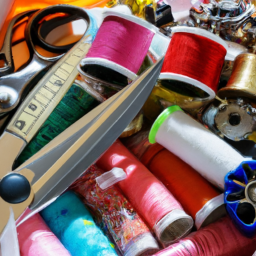
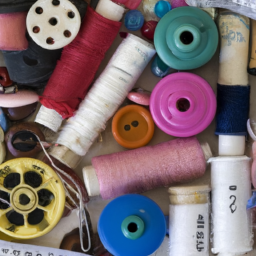
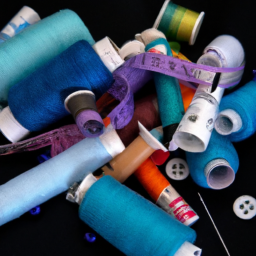
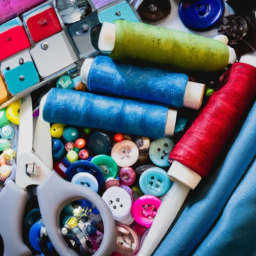
Great post! All of these materials will come in handy for the projects I’m working on.
Interesting article! This is useful info for anyone interested in sewing projects, as different materials can vary in price, difficulty level, and more. It’s helpful to know which materials are better for certain types of projects.
Fantastic post! This provides so much useful information about types of sewing materials. It’s so helpful to understand the differences between them so you can be sure to get just the right one for your project.
Super informative! Having a variety of materials is essential for successful projects. This post gives clear descriptions and is really useful when deciding what to get for different sewing projects. It’s neat to know there is a diverse selection to choose from.